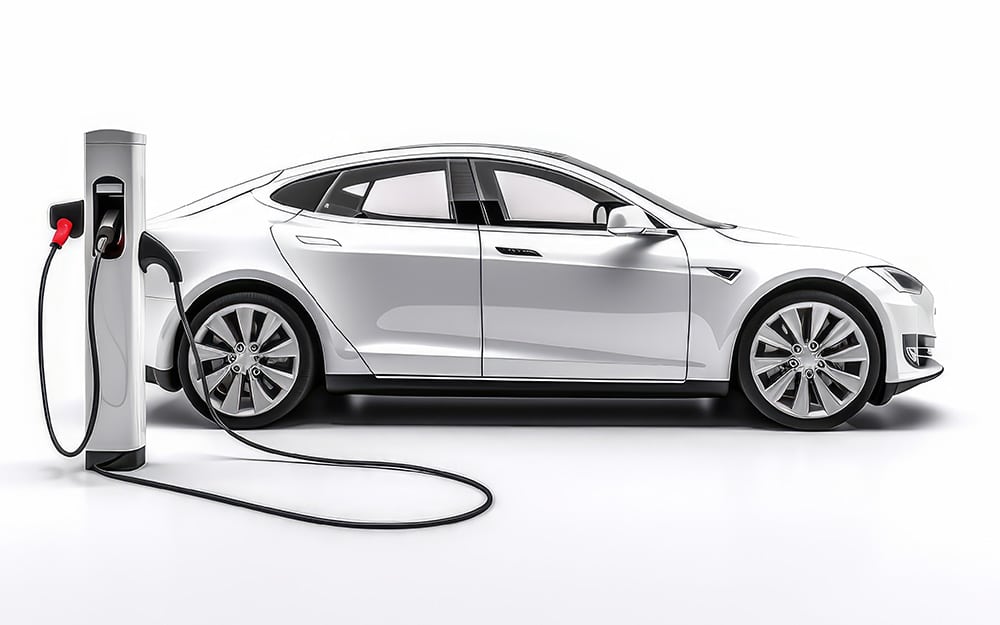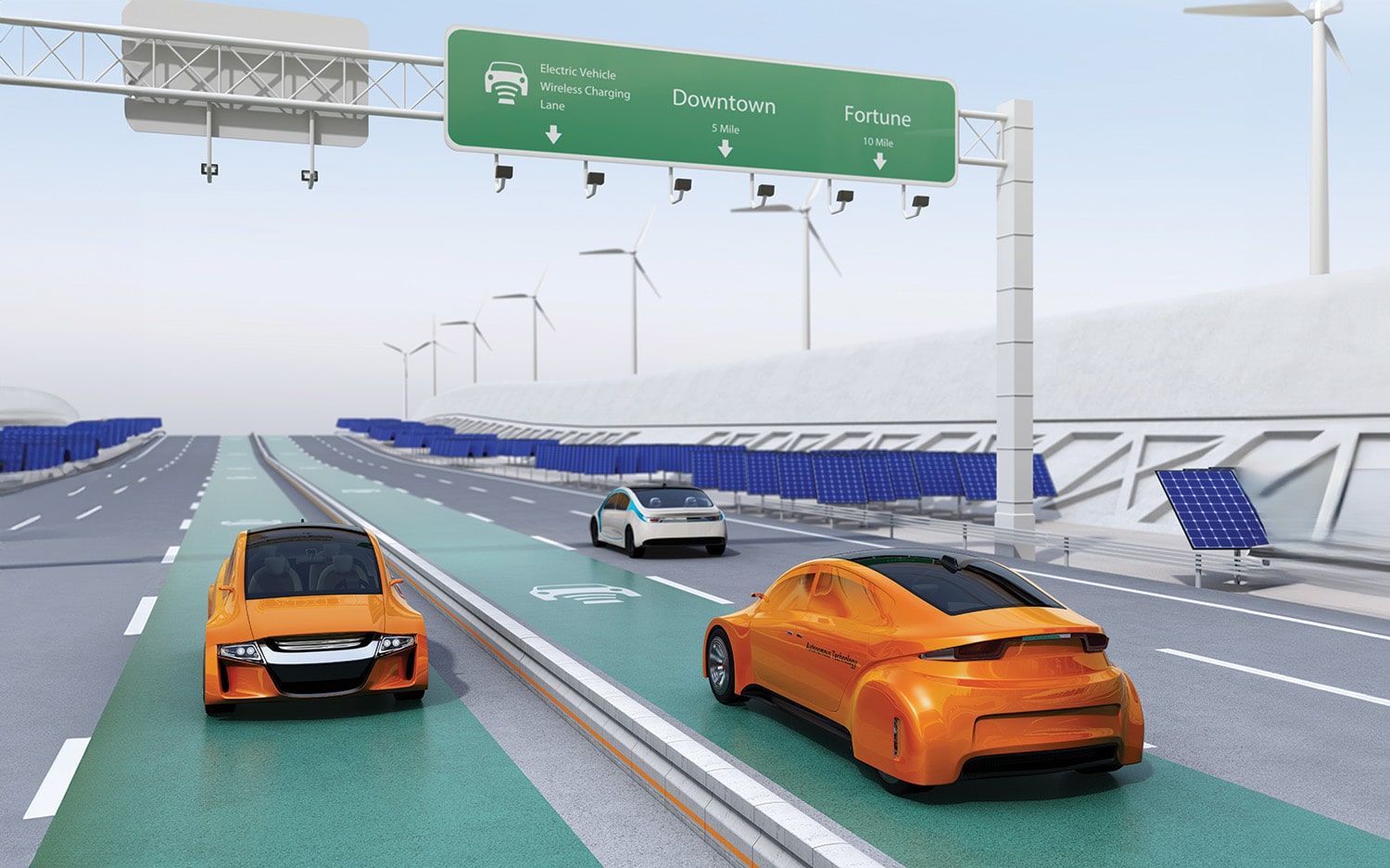
The Digital Tsunami is Here
How Data Standards are Shaping the Future of an Interconnected
Share:
Share:
Home » September 2023 » Innovation & Technology
At first glance, capturing revenue from EV charging seems simple and straightforward. Drivers plug in, and you charge them for the energy they use. This fee usually covers the cost of the electricity and a small profit for you. Yes, this is all true; however, it is just a piece of the larger revenue pie. Adding EV charging to your property—whether retail, hospitality or even multifamily—opens the door to even more earning opportunities at the charger and beyond.
In the charging world, revenue is a volume game. If only one driver uses your station, the financial yield is low. Advertising that you have charging and putting your stations ‘on the map’ via apps are great ways to draw more EV owners to your location. Similarly, hotel owners and multifamily properties are leveraging different tools like booking.com and apartments.com, which have filters designed to highlight EV charging amenities, drawing in additional users.
Another option is to tap into the electric rideshare movement. Both Lyft and Uber are investing in electrifying their fleets. Lyft has an entire program that encourages their drivers to shift to electric, touting fuel and maintenance savings. Their studies have also shown that EV riders are more generous tippers, and their EV drivers earn 25% more in tips per ride.
What does this mean for you? The bottom line is that these growing fleets need a place to fuel up, and what better place than your location? And with the networking software on many charging stations today, it is easy to promote repeat business with special pricing for different audiences, like rideshare drivers.
Similarly, if you have extra space in your parking lot, you can lease it out to car-share companies like Turo or Zipcar. There is even a federal program through the Department of Energy you can tap into, and for those with electric cars, this provides yet another revenue opportunity for your stations.
EV charging also allows you to add additional value and/or level up your existing amenities. For example, if your parking garage or hotel offers car washes, detailing, or putting air in vehicle tires, it’s super easy to add electric fueling to the list of services (and there are no EPA hassles or regulations, nor does your team need to leave the property). Your customers are already conditioned to pay for add-on services and will easily tack on a small premium to ensure their ‘tank’ is full. And even if you don’t charge for these services, the mere fact that you have them can increase your customer base, build customer loyalty, and be a differentiator for business.
This same concept applies to multifamily space. Multifamily properties are unique; many have resident-only parking and visitor parking, often with the former behind the fence or limited access. As previously mentioned, most chargers today can be equipped with software allowing for different pricing structures and access for each audience you serve. For example, you could charge your visitors a premium for charging access.
Similarly, if your residents do not have individual charging stations, you can charge a premium for anyone who fuels longer than their allotted time (specific time increments can be set via the software), charge at “prime” times, or if they opt not to move their car once it’s full. Most smart stations can detect if a car is full and can automatically apply a fee after the grace period.
Studies have also found that EV drivers are willing to pay a premium for faster charging via DC fast chargers (DCFC), which fuel in minutes versus hours like their level-2 counterparts.

Up to this point, we’ve talked about the ‘at the charger’ revenue potential, but we haven’t yet addressed the impact EV charging can have on your overall business. I like to say, “Just because I don’t buy gas anymore, it doesn’t mean I don’t still like potato chips.” The point is, even though I use a different fuel, I am still a hungry consumer.
For C-store owners, this is critical. In 2022, EV sales crossed over the 5% adoption rate threshold, meaning there’s no turning back. As Ernst & Young’s Steve Patton shared, “…this year’s data demonstrates that the U.S. is at a true precipice when it comes to mainstream EV adoption. We can expect to see more EVs, both commercial and consumer, on the road.”
For C-stores with gas pumps, this doesn’t just mean a loss of fueling revenue, it also equates to less sales at retail. Thus, dual pathing is a smart strategy. Not only does this allow them to capture electric fuel sales (which has a higher profit margin), it creates more retail sales opportunities with more charging dwell time.
Research reveals that EV drivers tend to have higher incomes and spending power. In 2022, a popular EV charging network surveyed its users and found charging stations were a clear destination for EV drivers, and they typically spent about $1 a minute shopping while they charged. (The average DCFC charging session is between 30-40 minutes.)
A 2019 study found that EV drivers were also more loyal. 81% of the 700+ EV owners polled agreed and confirmed their spending increased while charging. One respondent said, “We’ve spent way more money eating at restaurants with charging stations than we ever would have spent on gas.” Another reported, “It’s the convenience. I’m there, and I will explore (translation: spend money) at walkable businesses.”
All of this proves the revenue potential of charging surpasses what you would have expected.
One last consideration. Your success with any of these opportunities is deeply rooted in your control of the stations on your property. While the idea of getting free stations through a third party sounds appealing, it quickly limits how you can unlock and expand your station’s revenue potential—in other words, they prevent you from filling your pockets.
Third-party providers make their money through what they earn at the station. These earnings often need to cover the cost of electricity, the rent for the land they sit on, and all the station upkeep and maintenance, leaving very little, if any, revenue for you and nearly no room for you to expand that income stream.
Further, to cover these expenses, these providers frequently charge higher than average rates which discourages use, eliminates loyalty, and impedes repeat business – all of which can directly impact your business’ traffic, especially as EV ownership takes off.
Historically, this model has led to unserviced, broken stations, leaving you with little recourse. By owning and operating the stations, you can avoid these challenges, optimize earning potential, and control your property’s customer (or resident) experience. And we all know happy customers tend to be more loyal and spend more. ◆
Jim Burness is CEO & Founder of National Car Charging & Aloha Charge, and is a member of the IPMI Accessibility Working Group.

How Data Standards are Shaping the Future of an Interconnected

Preliminary Results

Parking & Mobility is IPMI’s flagship publication, covering the news, trends, analysis, technologies, and people of the parking and mobility industry, and how it affects and influences communities around the world.
| Cookie | Duration | Description |
|---|---|---|
| cookielawinfo-checkbox-advertisement | 1 year | Set by the GDPR Cookie Consent plugin, this cookie is used to record the user consent for the cookies in the "Advertisement" category . |
| cookielawinfo-checkbox-analytics | 11 months | This cookie is set by GDPR Cookie Consent plugin. The cookie is used to store the user consent for the cookies in the category "Analytics". |
| cookielawinfo-checkbox-functional | 11 months | The cookie is set by GDPR cookie consent to record the user consent for the cookies in the category "Functional". |
| cookielawinfo-checkbox-necessary | 11 months | This cookie is set by GDPR Cookie Consent plugin. The cookies is used to store the user consent for the cookies in the category "Necessary". |
| cookielawinfo-checkbox-others | 11 months | This cookie is set by GDPR Cookie Consent plugin. The cookie is used to store the user consent for the cookies in the category "Other. |
| cookielawinfo-checkbox-performance | 11 months | This cookie is set by GDPR Cookie Consent plugin. The cookie is used to store the user consent for the cookies in the category "Performance". |
| CookieLawInfoConsent | 1 year | Records the default button state of the corresponding category & the status of CCPA. It works only in coordination with the primary cookie. |
| elementor | never | This cookie is used by the website's WordPress theme. It allows the website owner to implement or change the website's content in real-time. |
| viewed_cookie_policy | 11 months | The cookie is set by the GDPR Cookie Consent plugin and is used to store whether or not user has consented to the use of cookies. It does not store any personal data. |
| Cookie | Duration | Description |
|---|---|---|
| _ga | 2 years | The _ga cookie, installed by Google Analytics, calculates visitor, session and campaign data and also keeps track of site usage for the site's analytics report. The cookie stores information anonymously and assigns a randomly generated number to recognize unique visitors. |
| _ga_02PMHW8YWC | 2 years | This cookie is installed by Google Analytics. |
| _ga_LC0QJJHM3J | 2 years | This cookie is installed by Google Analytics. |
| _ga_V9KYTSBYT2 | 2 years | This cookie is installed by Google Analytics. |
| iutk | 5 months 27 days | This cookie is used by Issuu analytic system to gather information regarding visitor activity on Issuu products. |
| Cookie | Duration | Description |
|---|---|---|
| mc | 1 year 1 month | Quantserve sets the mc cookie to anonymously track user behaviour on the website. |
| Cookie | Duration | Description |
|---|---|---|
| ultp_view_1052 | 1 day | No description |
| ultp_view_1058 | 1 day | No description |
| ultp_view_1060 | 1 day | No description |
| ultp_view_1064 | 1 day | No description |
| ultp_view_1068 | 1 day | No description |
| ultp_view_1070 | 1 day | No description |
| ultp_view_1072 | 1 day | No description |
| ultp_view_1078 | 1 day | No description |
| ultp_view_1082 | 1 day | No description |
| ultp_view_1088 | 1 day | No description |
| ultp_view_1100 | 1 day | No description |
| ultp_view_1103 | 1 day | No description |
| ultp_view_1114 | 1 day | No description |
| ultp_view_1118 | 1 day | No description |
| ultp_view_1122 | 1 day | No description |
| ultp_view_1125 | 1 day | No description |
| ultp_view_1130 | 1 day | No description |
| ultp_view_1132 | 1 day | No description |
| ultp_view_1135 | 1 day | No description |
| ultp_view_1541 | 1 day | No description |
| ultp_view_1554 | 1 day | No description |
| ultp_view_1557 | 1 day | No description |
| ultp_view_1560 | 1 day | No description |
| ultp_view_1563 | 1 day | No description |
| ultp_view_1568 | 1 day | No description |
| ultp_view_1572 | 1 day | No description |
| ultp_view_1576 | 1 day | No description |
| ultp_view_1580 | 1 day | No description |
| ultp_view_2305 | 1 day | No description |
| ultp_view_2321 | 1 day | No description |
| ultp_view_2338 | 1 day | No description |
| ultp_view_2342 | 1 day | No description |
| ultp_view_259 | 1 day | No description |
| ultp_view_270 | 1 day | No description |
| ultp_view_275 | 1 day | No description |
| ultp_view_286 | 1 day | No description |
| ultp_view_3074 | 1 day | No description |
| ultp_view_3115 | 1 day | No description |
| ultp_view_3334 | 1 day | No description |
| ultp_view_3336 | 1 day | No description |
| ultp_view_3338 | 1 day | No description |
| ultp_view_3340 | 1 day | No description |
| ultp_view_3346 | 1 day | No description |
| ultp_view_3354 | 1 day | No description |
| ultp_view_3361 | 1 day | No description |
| ultp_view_3367 | 1 day | No description |
| ultp_view_365 | 1 day | No description |
| ultp_view_367 | 1 day | No description |
| ultp_view_38 | 1 day | No description |
| ultp_view_3846 | 1 day | No description |